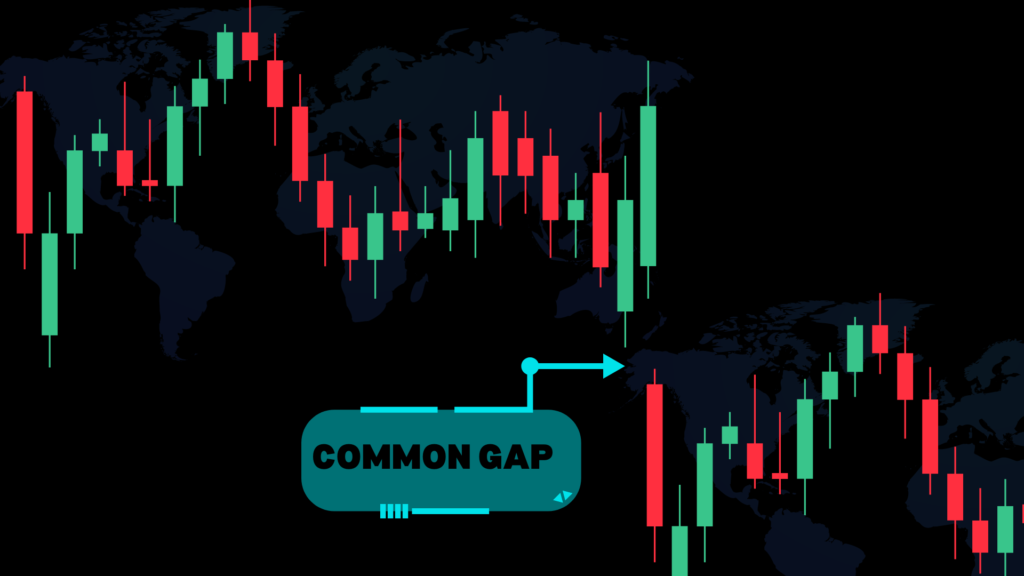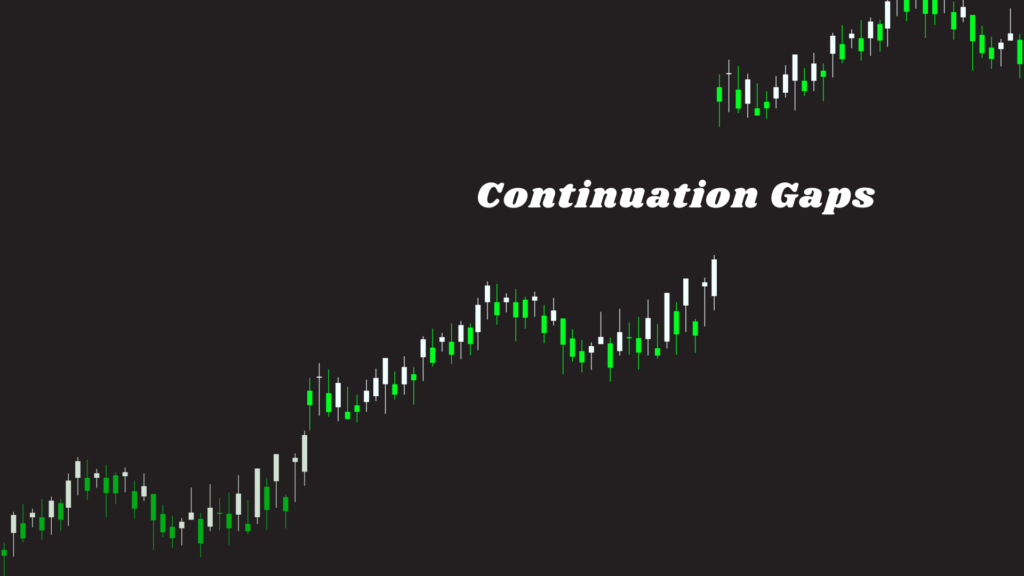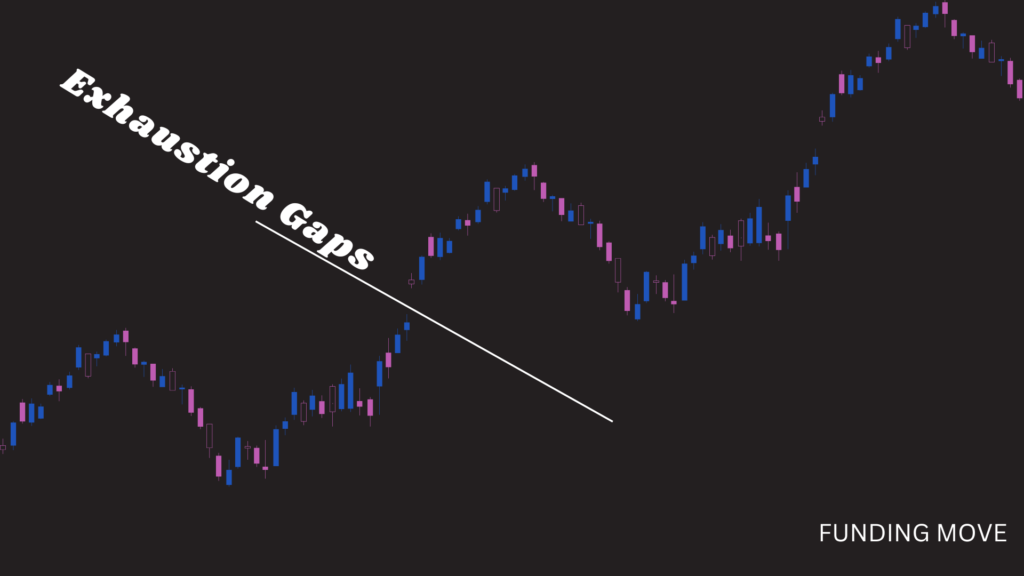Are You Ready to Trade Gaps in the Markets Successfully?
Table of Contents
If you’ve been navigating the financial markets, you’ve likely encountered a phenomena known as a trade gaps. This happens when there is a significant difference between the closing price of one candlestick and the opening price of the next. These trade gaps can be both risky and profitable for traders.

On a price chart, trade gaps appear as areas where no trading activity occurred because no orders were placed at those price levels. Essentially, at those prices, no buyers were matched with sellers. Even those who wanted to exchange found no takers.
In more extreme cases, these trade gaps can be enormous and potentially devastating, posing serious concerns. However, more typically, they reflect relatively limited areas where no trades have been performed, providing traders with possibilities to capitalise.
When Do Trade Gaps Occur?

Gaps are prevalent in financial markets, and traders must exercise caution, especially when holding holdings over weekends or during major news releases. Gaps are less common in forex trading due to its constant 24-hour nature, with the majority of them occurring on weekends. Stocks and commodities, on the other hand, have set trading hours and may face pauses between trading sessions or during market closings.
Another important time for gaps to appear is during major news announcements. In currency markets, gaps can form around the release of crucial macroeconomic data, whereas in stocks, unexpected news affecting a company’s operations can cause gaps. Commodity markets are highly subject to geopolitical tensions and other variables that can cause gap occurrences.
Traders frequently face difficult situations with trade gaps, especially when they occur during active trading hours. These gaps can quickly alter prices against a trader’s expectations, resulting in considerable negative slippage. This negative movement can amplify losses even if the trader has established a stop-loss and handled the risk wisely. Positive slippage, on the other hand, might increase earnings over the originally targeted take-profit level if the gap matches the trader’s position.
Gaps are important for traders using technical analysis because they represent changes in market sentiment and reflect changes in supply and demand. Experienced traders can take advantage of gaps, depending on where and in what context they occur within a trend.
Understanding Common Gaps in Trading

Common gaps occur in quieter market conditions and are generally negligible to traders because they are not related with major news or events. These gaps often close fast, implying that prices return to the level where the trade gaps first arose. Common gaps do not provide traders with accurate indicators of future price movements.
These trade gaps can occur inside trends, including when prices are moving sideways. They generally represent short-term swings caused by the market’s low liquidity.
Exploring Breakaway Gaps in Trading
Breakaway gaps derive their name from their occurrence at key price levels, such as support or resistance lines, trend lines, or chart patterns. Breakaway gaps, unlike typical gaps, take longer to fill. Instead, they frequently indicate the beginning of a new trend, resulting in a significant shift in market mood. This attribute makes them highly valued by traders due to their potential profitability.
The size of the gap and the following price action are important indicators of the strength of the upcoming trend. Traders often enter trades in the direction of the gap, above it for upward movements (as seen in the image below) and below it for downward movements. To properly control risk, stop-loss orders are often placed below upward gaps and above downward gaps.
Continuation Gaps Explained

Strong trends with few corrections often have runaway or continuation gaps. They indicate continuous market momentum and do not fill quickly, much like breakaway gaps. But what sets them apart is that they happen in the middle of a well-established trend, as opposed to when it first starts. News that confirms the trend’s direction or increased trader interest after a trend’s early stages might cause these gaps.
Trading usually starts in the direction of the gap, with positions being opened above for bullish movements (see below) and below for negative trends. Effective risk management calls for stop-loss orders to be set above the gap in bearish gaps and below the gap in bullish gaps.
Runaway gaps are useful predictors of the length and strength of a trend because of their propensity to emerge mid-trend.
Understanding Exhaustion Gaps in Trading

Exhaustion gaps show up at key price points that indicate support or resistance, or at the end of a trend. They indicate a different outcome, even though they resemble runaway gaps in that they emerge in the direction of the dominant trend and may lead to new highs (in bullish trends) or lows (in negative trends). The late entry of traders trying to keep up with the trend causes these gaps.
Exhaustion gaps, in contrast to other gap types, usually fill and cause a trend reversal. One important characteristic that sets it apart from runaway gaps is the unusually high volume, which quickly drops. Expert traders keep a careful eye on trading volumes in addition to price fluctuations, and often predict trend reversals when there is a big gap in volume. They place orders intelligently, placing stop losses below the gap in an uptrend or above the gap in a downturn (see the example below).
Want to read our previous Blog: Best Crypto Wallet
Less seasoned traders should exercise caution when using gap charts, as they provide insightful information about changes in market sentiment and subsequent price movements. Skilled traders who are able to recognize different kinds of gaps, understand where they come from, and what effects they might have, can use gaps to their advantage. Nonetheless, strict adherence to sound risk management guidelines is still necessary because gap trading is inherently unpredictable and has a higher degree of volatility. Trade with security!